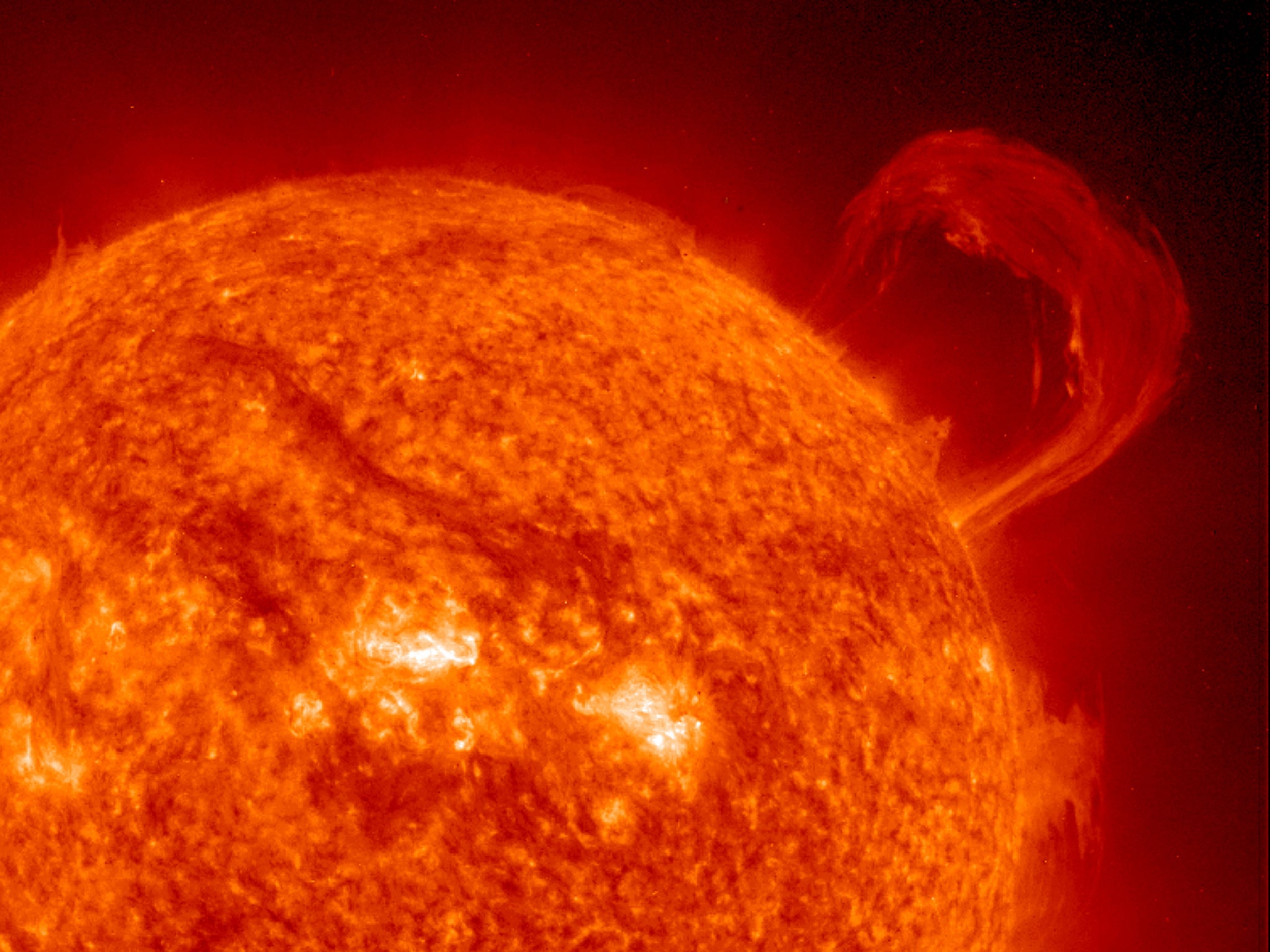The sun 'flips upside down': 10 surprising facts about our star
As the sun completes its 11 year cycle, culminating in its north and south poles 'flipping', take a look at some of the other interesting facts about the star, as well as some incredible images

The fact that the sun's magnetic field reverses every eleven years, isn't the only surprising thing about our closest star. Take a look at some other incredible facts about the ball of fire that gives life to Earth.
1. The sun makes up 99.8 per cent of the mass of the entire solar system. The sun’s core, although it only makes up around 2 percent of the sun's volume, holds nearly half of its mass.
2. The sun is travelling at 220 kilometres per second. It takes the 225-250 million years to complete an orbit of the centre of the Milky Way.
3. With a circumference of 2,715,395.6 miles, one million Earths could fit inside the sun.
4. As the sun has no solid body - it is made up of 92.1 percent hydrogen and 7.8 percent helium - different parts of the sun rotate at different rates. At the equator, the sun spins once about every 25 days, but at its poles the sun rotates once on its axis every 36 Earth days.
5. One day, the sun will be about the size of Earth. After its red giant phase - when the sun would have expanded, consuming Mercury, Venus and Earth - the sun will collapse, retaining its enormous mass, but shrinking to the approximate volume of our planet to become a white dwarf. It is currently categorised as a yellow dwarf and at 4.5 billion years old, is currently middle aged.
6. The sun’s magnetic fields generate solar wind - streams of charged particles, which travel through the solar system at 450 kilometres per second. The winds cause radio interference, the northern lights and tails on comets, as well as alter the trajectory of space crafts.
7. A complex internal mechanism about which little is known causes the reverse in polarity.
8. The temperature at the sun's core is about 15 million °C while its surface temperature is 5500 °C
9. Sunspots - visible dark patches that appear on the sun’s surface - are temporary phenomena whereby intense magnetic activity form areas of reduced surface temperature.
10. Solar flares shoot out from the sun’s surface during when magnetic energy is released by the during magnetic storms. They are the most violent eruptions in the solar system.
Join our commenting forum
Join thought-provoking conversations, follow other Independent readers and see their replies
Comments